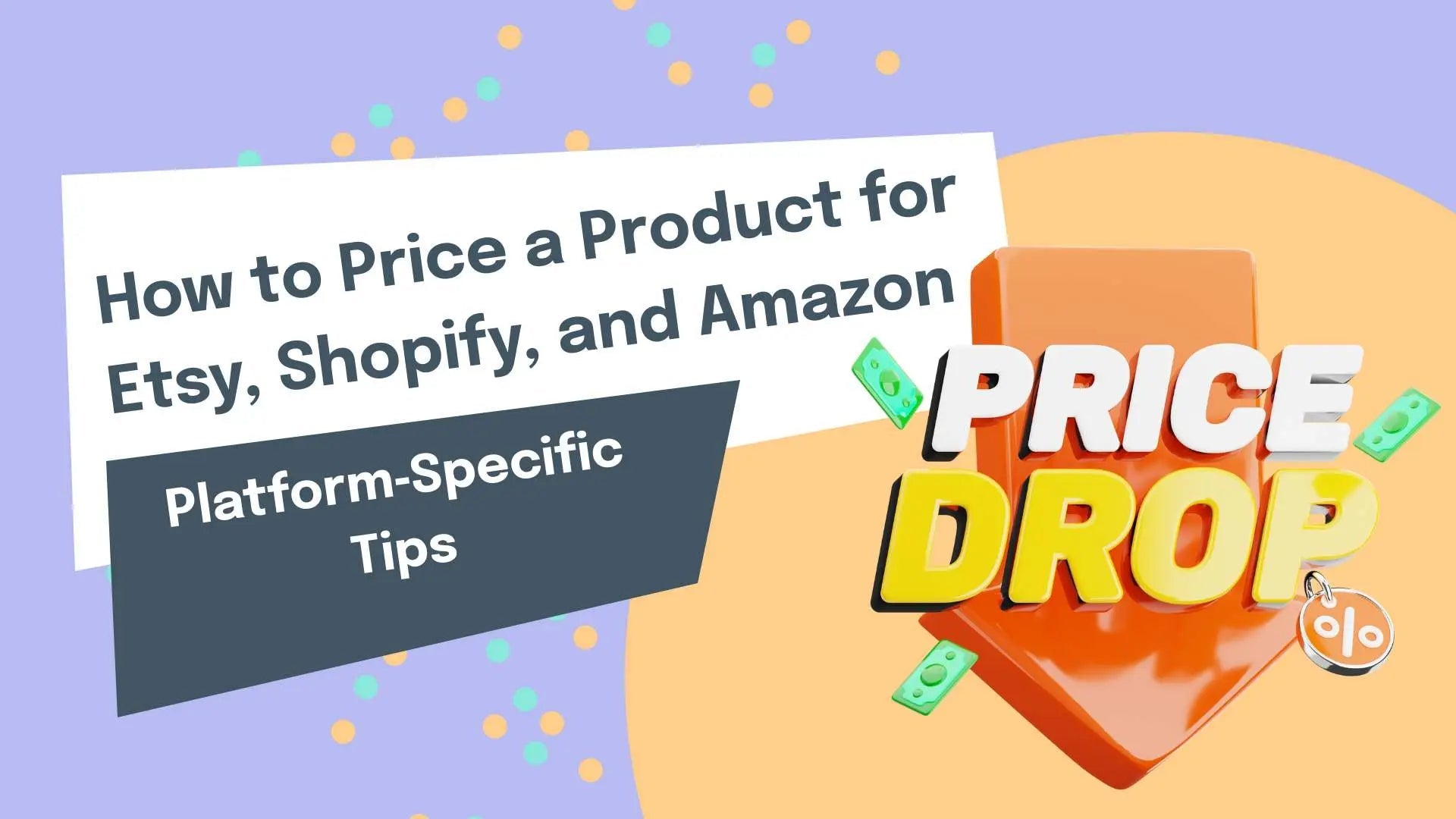How to Price a Product for Etsy, Shopify, and Amazon: Platform‑Specific Tips
Knowing how to price a product correctly is one of the most important decisions you’ll make as an ecommerce seller. Each platform—Etsy, Shopify, and Amazon—has its own buyer behaviors, cost structures, and pricing psychology. Your price can influence not just profit margins, but search visibility, perceived value, and conversion rate.
At Alerio Print, we specialize in print-on-demand tech accessories—like custom phone cases, laptop cases, and AirPods Case. When we launched, a free Etsy seller course gave us a foundation to understand platform fees, customer expectations, and pricing strategy. That early investment paid off—today, we sell across Shopify and Etsy with a repeat customer base and strong conversion rates.
1. Why Pricing Strategy Matters
Your price communicates value, quality, and business legitimacy. For print-on-demand, it also covers third-party manufacturing, shipping, platform fees, and leaves room for a healthy profit. Pricing too low may hurt your margins; pricing too high may reduce conversion. Getting it right is critical.

2. Pricing a Product on Etsy
- Start with your base POD cost + listing fee ($0.20) + transaction fees (6.5%) + payment processing (~3% + $0.25).
- Research competitor pricing using Etsy search and focus on similar items.
- Use charm pricing ($24.99 instead of $25.00) and consider offering free shipping.
- Offer personalization or premium packaging as paid add-ons.
We started with Etsy and applied insights from a free Etsy seller course—covering SEO, pricing tiers, and customer retention. It helped us avoid the trap of racing to the bottom on price while still remaining competitive.
3. Pricing for Shopify
Shopify gives you full pricing control, but also means handling your own marketing, returns, and customer acquisition.
- Calculate base cost + transaction fees + marketing costs (Facebook/Instagram ads, influencer collabs).
- Include extra margin to cover sales/discounts/promotions.
- Bundle complementary items (e.g. phone case + charger) to increase order value.
- Position your pricing according to your brand—mid-range or premium, not bargain.
We set our Alerio Print Shopify prices slightly higher than Etsy to account for email discounts, customer retention bonuses, and custom packaging.
4. Pricing a Product on Amazon
Amazon shoppers are often deal-seekers, but they’re also willing to pay for fast delivery and good reviews.
- Factor in FBA (Fulfilled by Amazon) or FBM (Fulfilled by Merchant) fees.
- Consider the competitive Buy Box and adjust price for visibility.
- Use tiered SKUs for personalized, premium, or bulk-buy versions.
If your POD product is distinctive (like personalized marble phone cases), you may stand out enough to justify higher pricing—even in a competitive space.
5. How Alerio Print Builds Its Pricing Structure
- Base cost: Includes manufacturing and packaging of POD tech products.
- Platform fee buffer: Built into margin depending on where it’s sold.
- Free shipping threshold: Orders over $50 ship free, with margin baked in.
6. Updating Prices as You Scale
As your business grows, your pricing should evolve too:
- Offer volume discounts (e.g. buy 2, save 10%).
- Use loyalty pricing for repeat buyers via email marketing.
- Raise prices slowly if materials or fulfillment costs increase.
Test changes one platform at a time. On Etsy, update a single listing; on Shopify, run a short-time promo; on Amazon, test within a small SKU subset.
7. How to Handle Price Objections
Sometimes customers ask, “Why is this more expensive than similar items?” Your product page should answer this in advance:
- Emphasize handmade, personalized, or premium materials.
- Include customer reviews that highlight durability and service.
- Add comparison visuals—show why yours is better.
At Alerio Print, we clearly explain that every product is printed on demand with quality control at every step. That alone justifies a few extra dollars per product.
8. Platform-Specific Pricing Summary
| Platform | Key Pricing Tip | Pricing Range (Example) |
|---|---|---|
| Etsy | Use charm pricing & personalization | $24.99–$29.99 |
| Shopify | Include promo margin & upsell paths | $27.99–$34.99 |
| Amazon | Balance price with fulfillment method | $25.99–$32.99 |
9. Final Pricing Checklist
- ✅ Base cost + platform fees + margin
- ✅ Platform-specific pricing adjustments
- ✅ Competitive research and positioning
- ✅ Product page messaging for value justification
- ✅ A/B testing at key price points
- ✅ Bundling or personalization strategy
10. Final Thoughts
Learning how to price a product effectively isn’t just about math—it’s about understanding customer behavior, platform dynamics, and your business goals. Start lean, test often, and refine as you go.
If you’re launching a print-on-demand brand, especially in tech accessories, we recommend taking a free Etsy seller course to build foundational skills. Then, bring your designs to life using a platform like Alerio Print—where fast processing, quality control, and competitive pricing are built into every order.




